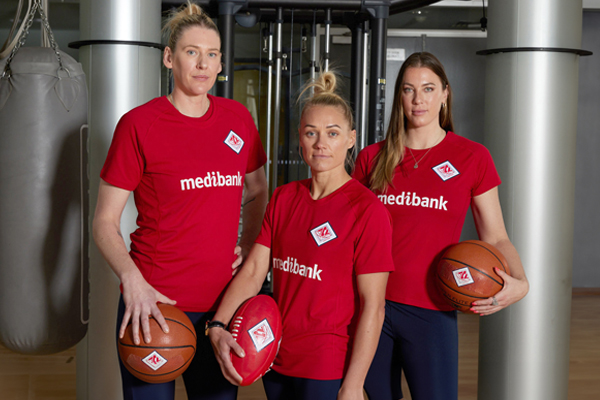-
Download your training guide here
If you’ve completed a few half marathons and want to push yourself towards a new personal best (PB), this is the training guide for you.
To achieve your personal best, you’ll want to improve both your endurance and your speed. The best way to do this is by increasing the length of your runs, the pace you’re running at and by combining distance and speed training sessions.
Remember this is a 12 week guide, so make it work for you – you can be flexible and mix up days and runs when you need to. If you miss a run, you can make it up. The real aim is to be consistent with your training.
Training days explained
Easy run: The runs on Mondays, Wednesdays and sometimes Fridays or Saturdays are designed to be done at a comfortable pace.
Stretch + strengthen: Stretching is key to a strong, supple body and should be done daily. Strength training, particularly for your core muscles, is an important focus of this training guide. Try bodyweight exercises like push-ups, chin-ups or dips, or light weights with high reps at your local gym.
Rest: Your muscles need time to recover and rebuild, so ensuring adequate rest is just as important as the runs in this guide. In particular, taking the time to rest before and after your long run will help reduce your risk of injury. Be realistic about your fatigue level, especially in the closing weeks of the program, and don’t be afraid to take an extra day off now and then.
Time-based runs: In this guide, some runs are based on distance (eg 5 km), while some are based on time (2 hours). The time-based run, scheduled for Sundays, may see you running further than your half marathon distance. The aim is to forget about the distance and to find rhythm in your running.
Hill runs: Hill training helps strengthen your quads and build speed. This guide has three hill sessions, all in the first half of the program. If you find these sessions work for you, you can substitute hill sessions with any of the interval runs.
Speed sessions: To increase your speed to achieve your PB you need to train at an increased pace a couple of sessions per week. This guide alternates interval running with tempo runs. An interval workout usually consists of fast runs separated by walking or jogging. This guide begins with 5 x 400 m and reaches 10 x 400 m the week before your half marathon. Walk or jog between each. Medium pace is around your 10 km best time pace and fast pace is around your 5 km best time pace.
Tempo runs: This is a continuous run with a buildup of pace in the middle. A tempo run of 30 to 45 minutes would begin with 10-15 minutes easy running, build to 15-20 minutes at medium pace near the middle, then 5-10 minutes easy toward the end. The pace buildup should be gradual. A tempo run can be as hard or easy as you want to make it.
Warm-up: A good guide for a warm-up is to jog 1-2 km, sit down and stretch for 5-10 minutes, then run some easy strides (100 m at near race pace). Cool down afterwards by doing half the warm-up distance.
Pace runs: In this guide some workouts are designed as pace runs to get you used to the pace you will run to achieve your PB. For example in week 10 you run a session of 8 km at PB race pace. Remember to do a short warm-up before starting each of these pace runs.
Long runs: Run at a comfortable, conversational pace, except on those days where a negative split run is prescribed. For a negative split run, run the first half at a comfortable pace and the second half at an increased pace, i.e. you cover more distance in the second half of the run than you do in the first.
Cross-training: On cross-training days, try a different kind of workout – like biking, swimming, rowing or a group fitness class at the gym. Even though you are focused on achieving a PB, cross-training is still an effective session as it helps with active recovery and injury prevention.
Test: The idea with the test runs is to measure your time, progress and fitness, if it suits you. Another option is to find local fun-runs at these distances so you can time your race and get used to running with other competitors.
Download the full guide here.
Half Marathon Training Guide (Advanced – 12 Weeks)

-
Everything you need to know about parkrun
Been wondering what a parkrun looks like? Where do you go? What do you do? How do you sign up? Find out here.
-
Five ways to exercise when on a budget
You don’t need to spend money on gym memberships just to meet your fitness goals. Here are five free ways to stay healthy and active when you’re living on a budget.
-
How parkrun changed my life
Christie Farrow went from being an exercise-phobe to a true blue runner with parkrun.
-
Australia's top female athletes unite on ACL injury
Some of Australia's most talented athletes have joined forces to highlight the unique injury challenges women face.
-
How to create your perfect summer fitness plan
Be inspired by the sunshine and get moving
-
The essential foam rolling routine
Improve posture and flexibility with this essential foam rolling routine. Discover effective stretches to ease muscle tightness and enhance your daily movement.
Subscribe to receive the best from Live Better every week. Healthy recipes, exercise tips and activities, offers and promotions – everything to help you eat, move and feel better.
By clicking sign up I understand and agree to Medibank's privacy policy






